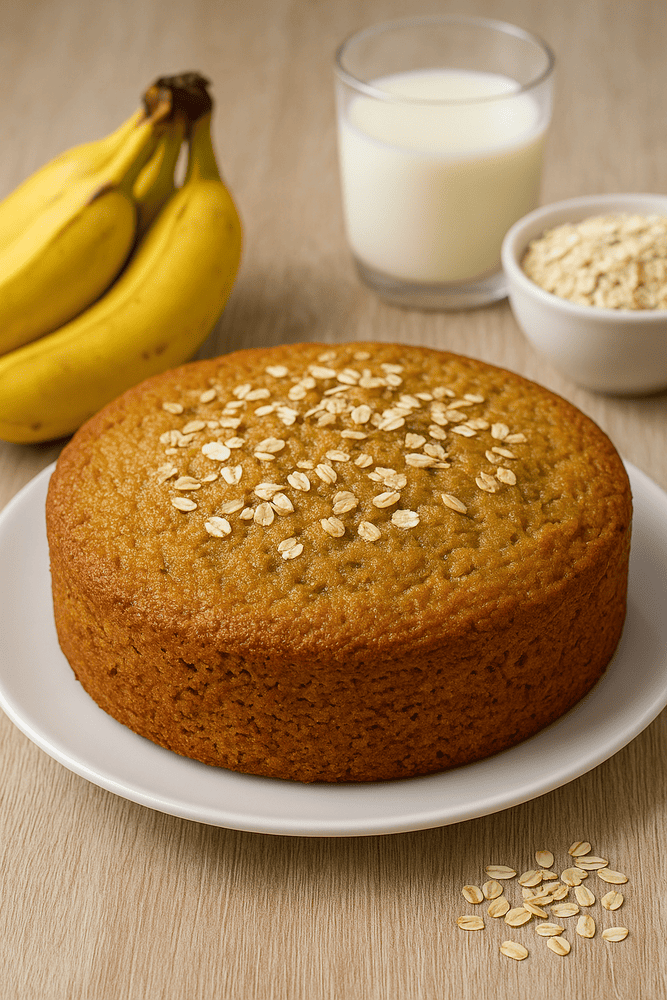Never before have people been so focused on health and well-being. In the midst of increasingly fast-paced lives, more and more individuals are seeking balance—eating better, cutting back on ultra-processed foods, and taking care of their bodies without giving up life’s simple pleasures, like a good slice of cake.
But can a healthy cake still be moist, fluffy, and full of flavor? Absolutely. With the right ingredients and a few smart techniques, you can create a cake that’s both nourishing and delicious.
In this article, you’ll learn how to adapt traditional recipes, make intelligent substitutions, and appreciate the beauty of natural baking. We’ll connect this topic with key ideas from previous articles, like flour selection (#7), fat choices (#8), sugars (#6), and moisture retention (#15), proving that health and indulgence can go hand in hand.
A new way to look at cake
Cake doesn’t have to mean guilt. The new wave of baking celebrates:
- Natural and less processed ingredients
- Fiber-rich additions, fruits, and healthy fats
- Natural sweeteners or mindful sugar reduction
- Balance: not about cutting everything out, but about choosing better
Many people now enjoy whole-grain cakes for breakfast, vegan slices as an afternoon treat, or no-sugar options for dietary needs. This reflects a broader movement—people want food that makes them feel good inside and out.
1. Cutting back on sugar without losing taste
You don’t have to eliminate sugar completely. Instead, reduce it mindfully or switch to better alternatives.
Smart options include:
- Reduce sugar by up to 25% in most standard recipes
- Replace white sugar with coconut sugar, brown sugar, or demerara
- Use mashed bananas, applesauce, or date paste to add natural sweetness
- For lower-calorie versions, try xylitol or erythritol in moderation
As discussed in article #6, sugar affects both flavor and texture—so test your substitutions carefully for best results.
2. Smarter flour choices
Refined flours have little nutritional value, but there are simple ways to improve their health impact:
- Use half whole wheat flour and half all-purpose to keep things light
- Bake with oat flour to increase fiber and keep the crumb tender
- Try functional flours like almond, flaxseed, or brown rice flour
As covered in article #7, each type of flour behaves differently. Be mindful of moisture levels and structure when making substitutions.
3. Healthier fats for a better balance
Fat helps cakes stay moist and satisfying. But you can swap out heavier options for healthier ones.
Great substitutions include:
- Flavorless coconut oil instead of butter
- Plain yogurt or kefir for creaminess and probiotics
- Mashed avocado in chocolate cakes for richness without dairy
- Applesauce or banana purée to replace part of the fat and sugar
As article #8 showed, fats affect texture, flavor, and moisture—so be sure to adjust the recipe accordingly when swapping.
4. Add nutrients, not just take things out
A healthy cake isn’t just about what you remove—it’s about what you add to make it better.
Try including:
- Chia, flax, or sesame seeds for fiber and healthy fats
- Nuts and almonds for crunch, protein, and flavor
- 100% cocoa powder for antioxidants and depth
- Spices like cinnamon, ginger, and nutmeg for warmth and anti-inflammatory properties
- Fresh or dried fruits like apple, blueberries, banana, or dates
These add nutrition, interest, and an unforgettable taste.
5. Tips for keeping the texture soft
Healthier cakes can turn out dense if you’re not careful. Use these techniques to maintain fluffiness:
- Sift the dry ingredients to keep the batter light
- Whisk the eggs well to trap air
- Use baking soda with an acidic ingredient like yogurt, lemon juice, or vinegar to help it rise
- Don’t overbake — healthier cakes tend to dry faster, so monitor closely
As we learned in article #15, proper baking time and temperature are key to preserving moisture.
Recipe: Healthy Banana Oat Cake
Ingredients:
2 ripe bananas, mashed
2 eggs
1/4 cup vegetable oil or coconut oil
1/4 cup brown or coconut sugar
1/2 cup milk (or plant-based alternative)
1 cup oat flour
1/2 cup whole wheat flour
1 tsp baking powder
1/2 tsp cinnamon
1 pinch of salt
Instructions:
- Preheat oven to 350°F (180°C). Grease a medium loaf pan.
- Combine bananas, eggs, sugar, oil, and milk. Mix well.
- Add the flours, cinnamon, salt, and baking powder. Stir gently until combined.
- Pour the batter into the pan and bake for 30–35 minutes, or until a toothpick comes out with a few moist crumbs.
This cake is mildly sweet, full of fiber, and has a soft, moist crumb—perfect for breakfast or an afternoon treat.
Final thoughts
With the growing trend toward health-conscious living, baking has become more than just making desserts—it’s about creating food that nourishes and delights. A healthy cake is a reflection of intention: caring for your body without sacrificing pleasure.
With the right choices and some creativity, you can turn any recipe into something more wholesome. And when you offer someone a healthy slice of cake, you’re sharing more than just food—you’re sharing care.
Next up, we’ll explore “How to Bake a Vegan Cake That’s Actually Delicious.” Because even without eggs, milk, or butter, cakes can still be amazing.
